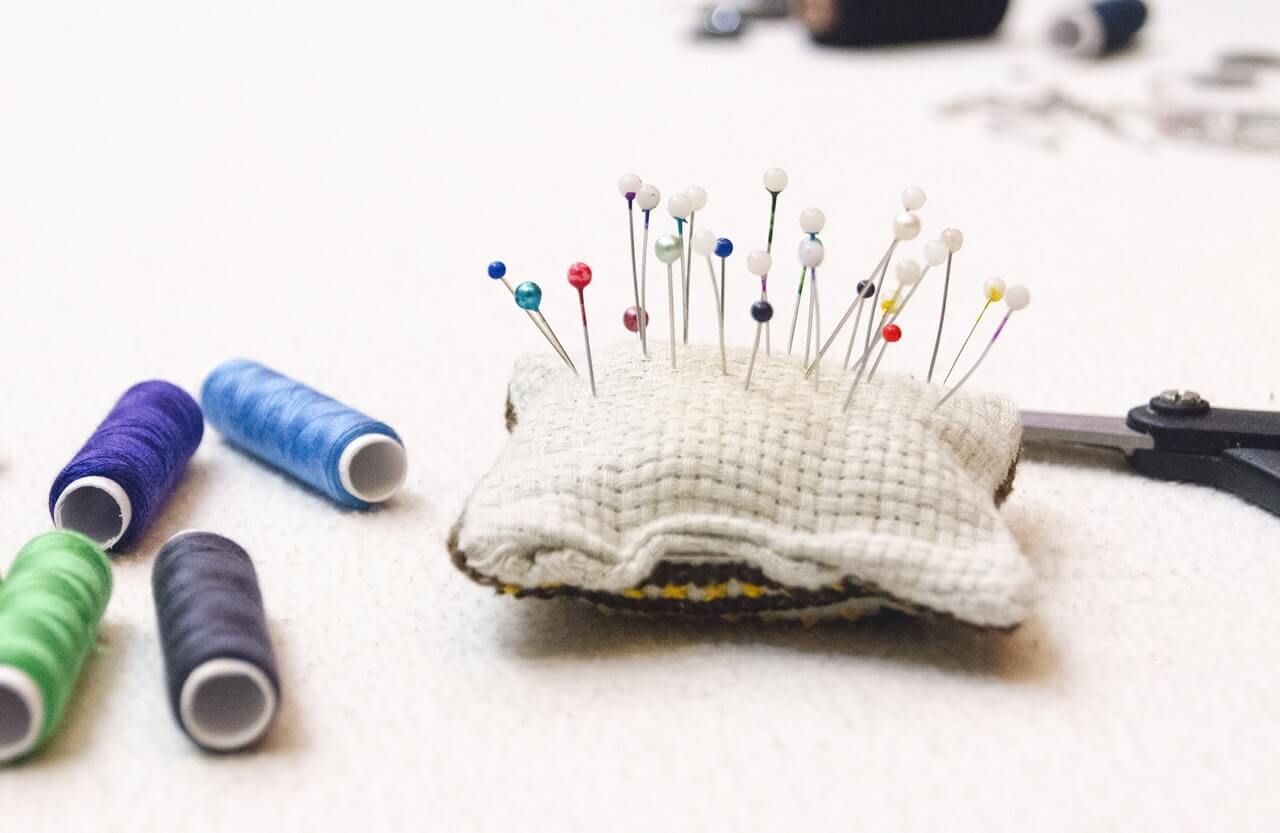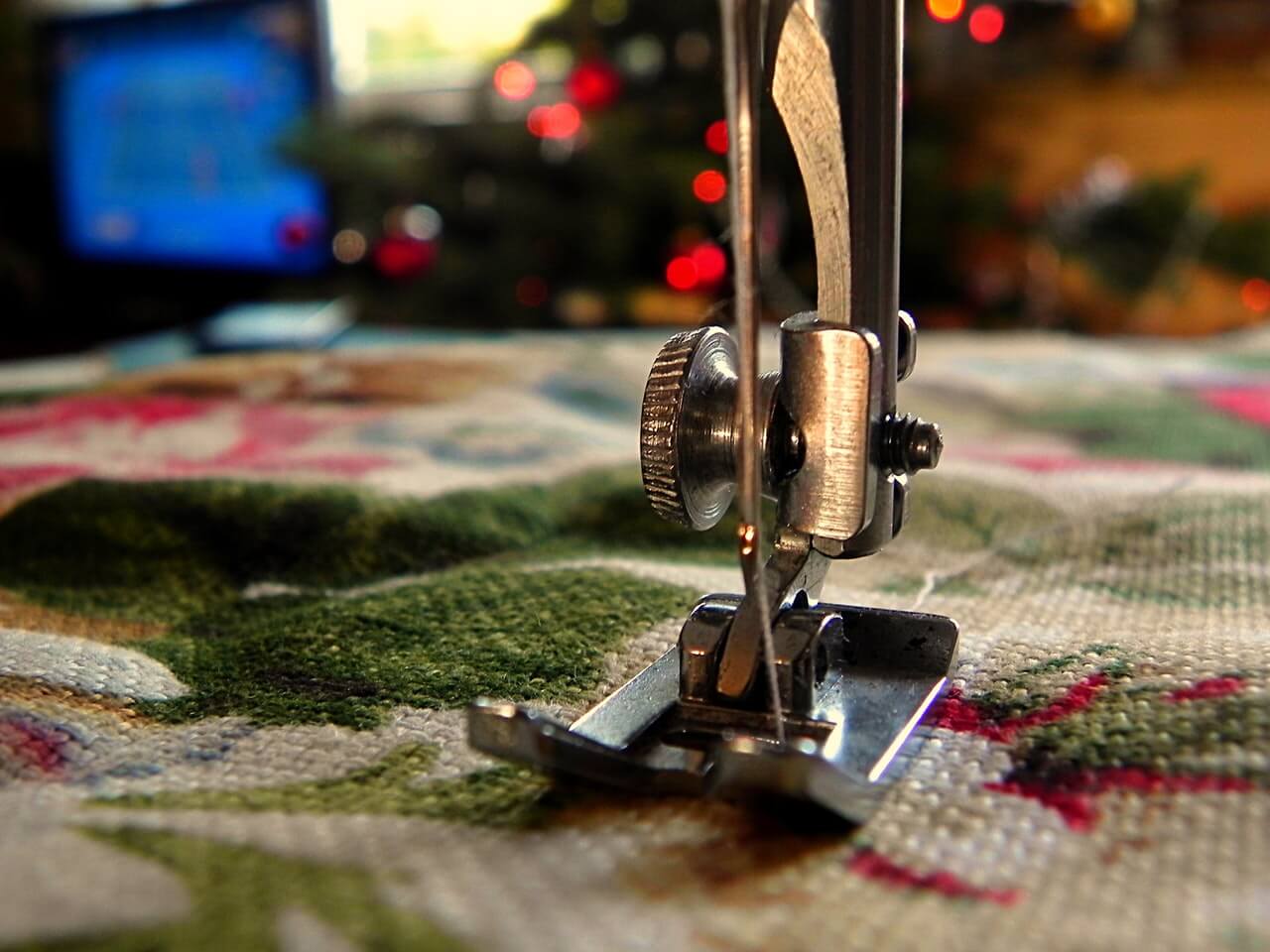Sleeping under a handmade quilt is one of life’s eternal pleasures and no bedcover makes a bed look quite as inviting as a uniquely designed and handcrafted bed quilt. Quilting started out centuries ago as a practical solution to common problems like the need to stay warm during long winters and the need to make clothes last longer by patching torn pieces with odd piece of fabric.
In modern times quilting has become an art form and quilted wall hangings are an integral decorative feature on the walls of many private homes and public places.
Quilting is a totally absorbing pastime partly because it combines a passion for fabric with infinite possibilities for creative expression from simple patchwork pieces and traditional quilts patterns to art quilts. And best of all: quilting fosters friendships that last a lifetime.
What is a quilt and what is quilting?
A quilt is made with layers of fabric sewn together. To make a quilt, two or more layers of fabric are sewn together. Most quilts are made of three layers: the top layer also called the quilt top, the batting and the bottom layer, also called the backing.
The quilt top is the part that is sewn or pieced together from other pieces of fabric to from the design. The batting is a fibrous material made of cotton, wool or synthetic materials that comes between the top and bottom layers and adds thickness to the quilt. It’s also the batting that gives the lovely texture to quilting.
Batting comes in different thicknesses and produce different results in the end product. The backing forms the bottom layer or back of the quilt. The quilt is made by stacking the three layers and sewing through all three layers either by hand or with a sewing machine.

Quilt tops – limitless possibilities
There are countless ways to make a quilt top. Let’s look at a few of them.
Whole-cloth quilts
A whole-cloth quilt is made by using an uncut piece of fabric and quilting it either by hand or machine. Plain fabrics with no patterns, also called solids, are quilted with elaborate quilting designs that create texture and depth in these stunning pieces.
Piecing
Most quilt tops are created by sewing or piecing cut pieces of fabric together. The design is determined by the size, colour and shapes the fabric is cut in – squares, triangles, strips, odd shapes, etc. The design can be as simple as sewing squares together.
A charmingly simple or a stunningly bold effect can be achieved depending on the choice of colours, the size of the squares and the way you arrange them. Some of the most iconic quilts that have stood the test of time were made using this method.
Most quilters start off with traditional quilts which are constructed using predesigned blocks. Double Wedding Ring is an example of a popular traditional quilt pattern. Over the years quilters have pushed the boundaries of traditional piecing and today you can see quilts made of fabric cut and pieced in any shape you can think of, resulting in stunningly realistic images.

Appliqué
Appliqué is a technique that allows for more design possibilities. Basically it involves cutting out a shape and stitching it on top of a background. This technique is very popular with quilters as it allows one to work with simple, striking shapes that can be used for children’s bed quilts as well as any intricate shape that would be difficult to piece together.
There is a number different appliqué techniques and it can be done by hand or machine. The most simple and also the quickest is to simply machine stitch the shape onto a background. Hand appliqué involves cutting the shapes and then turning in the raw edges before attaching them to the background with invisible slipstitching.
Reverse appliqué, also known as mola is a technique that involves stacking layers of bright, plain fabric and tacking them together. The design is arrived at by cutting different parts of the two top layers of fabric away. The raw edges are turned in and sewn with invisible slipstitching. Making a mola is a layer by layer discovery that makes one fall completely in love with mola.
Paper piecing
If you want to be able to sew 100% accurately no matter how small the scraps are you’re working with, then this technique is for you. The design is drawn on a piece of light weight paper which forms the basis for you to sew your cut pieces of fabric on.
The paper foundation shows the design, sewing lines and a numerical sequence to follow. The pieces of fabric are sewn onto the back side of the foundation which later becomes the right side of your design. When all the pieces are sewn, the paper foundation is removed.
And now for the actual quilting!
A finished top only becomes a quilt once it is quilted, that is, once all three the layers are sewn together with quilting stitches. In preparation for the quilting a quilt sandwich is made with the backing, then the batting and last the top. The quilt sandwich is basted together and carefully smoothed out to avoid wrinkles in the material.
A basic and fun way to attach the three layers is to hand tie the quilt, which strictly speaking is not actual quilting. Basically the three layers are attached by pulling a piece of yarn through all three layers and tying it. You make these ties at random intervals to secure the layers. You can also use buttons for an added decorative effect.
Most quilts are hand quilted or machine quilted. Hand quilting adds a special dimension to quilts. It takes practice to master hand quilting. Hand quilters use a hoop, a thimble and special thread for hand quilting. The hoop stretches the three layers tightly so the quilt doesn’t warp and buckle. Some contemporary hand quilters have done away with hoops and have found other ways to hold the fabric in place.
Hand quilting is time-consuming though, so most quilts these days are machine quilted. Machine quilting can be done on an ordinary sewing machine. By dropping the feed dogs on your sewing machine you can do free motion quilting which allows you unlimited design possibilities. There are literally hundreds of quilting designs to choose from or you can come up with your own.
If you are working with large quilts, a longarm quilting machine is a great choice. These machines sew through all three layers of the quilt by moving the machine, not the quilt. You can add a computer system to the longarm, so you can have perfectly quilted work without hours of practicing. These machines take up a lot of space and are expensive, but will continue working once you have programmed them.

Art quilts
An article about quilting wouldn’t be complete without mentioning art quilts. There isn’t a simple way to define the art form. Modern quilters often, but not exclusively, use bold colours, abstract, geometric designs and unconventional piecing methods to create stunning art pieces which can incorporate an array of materials in addition to fabric. These works can be seen at quilt exhibitions, and national and international quilt festivals.
Conclusion
Quilting has come a very long way from patchwork bedspreads. For someone who loves fabric and has a yearning to create, quilting promises lifetime of joy.
The possibilities are simply endless.


